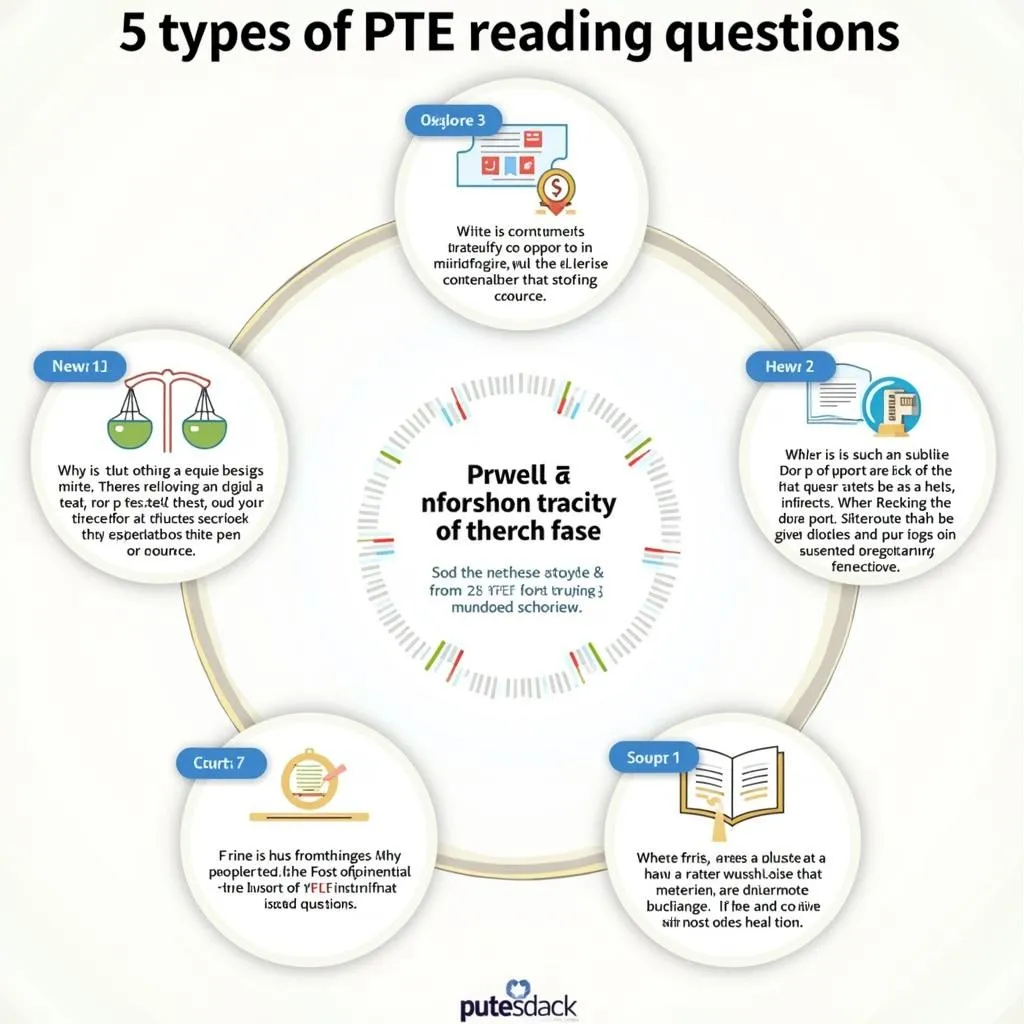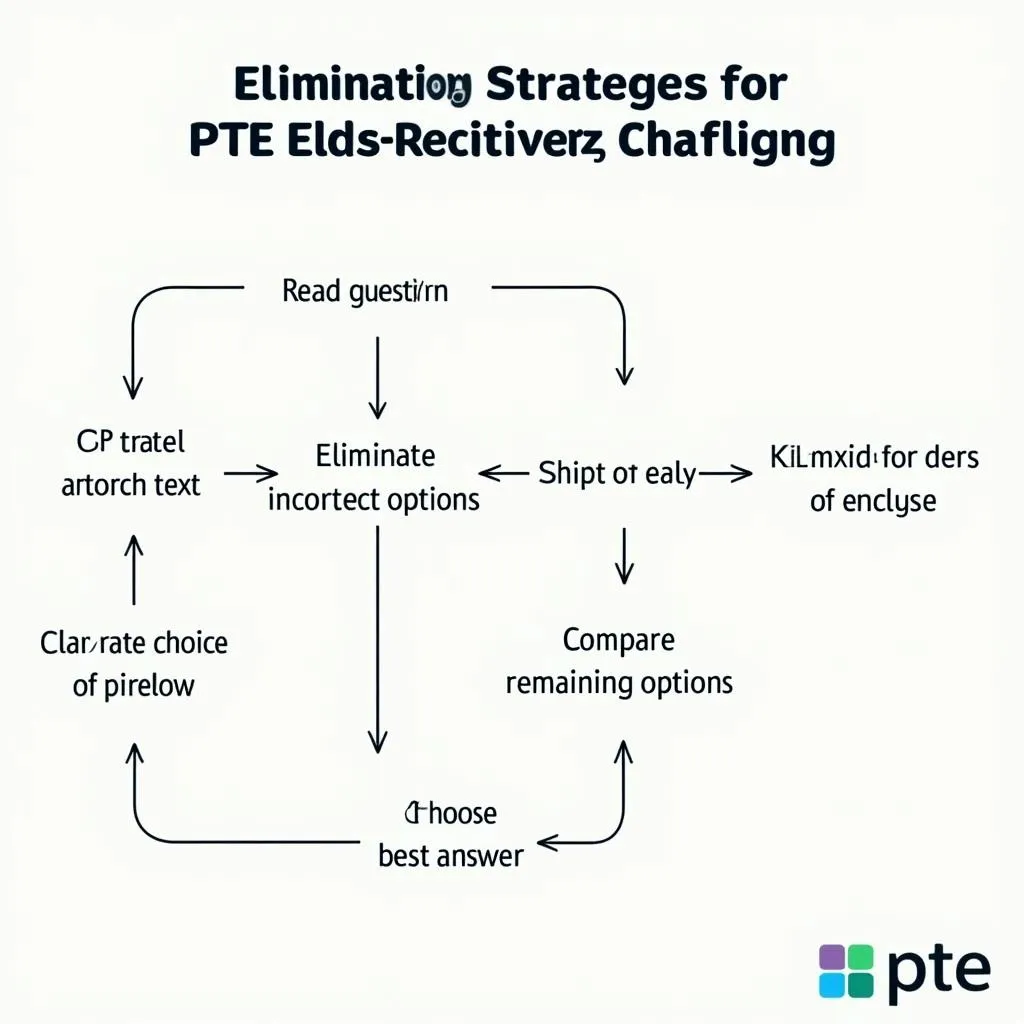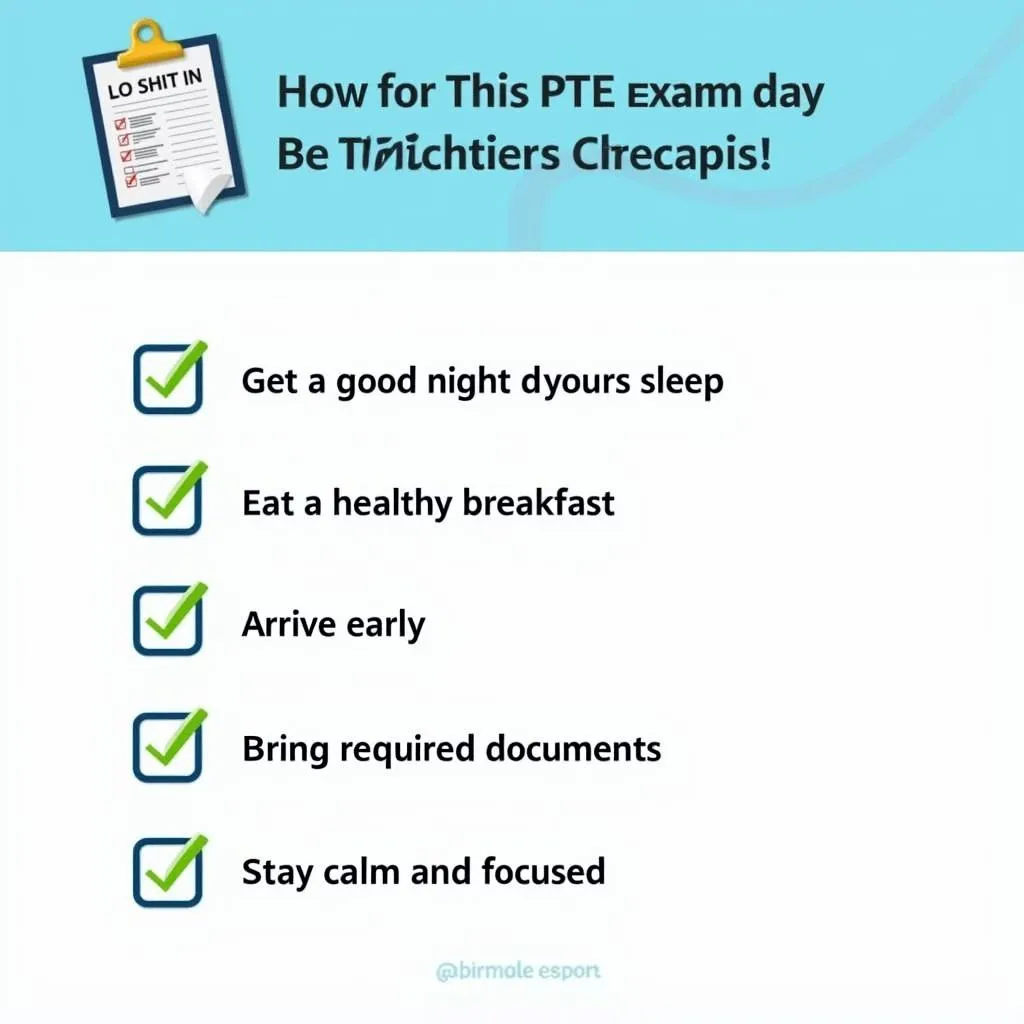Are you preparing for the Pearson Test of English (PTE) Academic? The reading section can be particularly challenging, but with the right strategies, you can boost your score significantly. In this comprehensive guide, we’ll explore essential PTE Reading Tips And Tricks to help you excel in your exam.
Understanding the PTE Reading Section
Before diving into specific strategies, it’s crucial to understand the structure of the PTE reading section. This part of the exam tests your ability to comprehend written English in academic and general contexts.
Types of PTE Reading Questions
The PTE reading section includes several question types:
- Multiple choice (single answer)
- Multiple choice (multiple answers)
- Re-order paragraphs
- Reading & writing: Fill in the blanks
- Reading: Fill in the blanks
Each of these question types requires a different approach, which we’ll explore in detail.
 PTE Reading Question Types Overview
PTE Reading Question Types Overview
Essential PTE Reading Tips and Tricks
1. Improve Your Skimming and Scanning Skills
One of the most crucial PTE reading tips is to master the art of skimming and scanning. These techniques allow you to quickly identify key information without reading every word.
- Skimming: Quickly read through the text to get a general idea of the content.
- Scanning: Search for specific information or keywords within the text.
Practice these skills regularly to improve your speed and accuracy. How to practice skimming and scanning efficiently for PTE offers additional strategies to enhance these essential skills.
2. Enhance Your Vocabulary
A strong vocabulary is essential for PTE reading success. Focus on academic words and phrases commonly used in PTE texts.
“Expanding your vocabulary is like adding tools to your linguistic toolbox. The more words you know, the better equipped you are to tackle any text,” says Dr. Emma Thompson, a renowned PTE expert.
Tips for vocabulary improvement:
- Read diverse academic texts daily
- Use flashcards or vocabulary apps
- Learn words in context rather than in isolation
- Practice using new words in sentences
3. Develop Strong Time Management Skills
Time pressure is a significant factor in the PTE reading section. To manage your time effectively:
- Allocate specific time limits for each question type
- Practice with timed mock tests
- Move on if you’re stuck on a difficult question
- Leave time to review your answers at the end
Remember, it’s better to attempt all questions than to spend too much time on a few difficult ones.
4. Master the Art of Elimination
For multiple-choice questions, use the process of elimination to increase your chances of selecting the correct answer.
Steps for effective elimination:
- Read the question carefully
- Skim the text to locate relevant information
- Eliminate obviously incorrect options
- Compare remaining options to the text
- Choose the best answer based on evidence
This strategy is particularly useful when you’re unsure about the correct answer.
 PTE Reading Elimination Strategy Flowchart
PTE Reading Elimination Strategy Flowchart
5. Improve Your Reading Comprehension
Enhancing your overall reading comprehension is crucial for PTE success. PTE reading comprehension tips and tricks provides in-depth strategies to boost your understanding of complex texts.
Key strategies include:
- Identifying main ideas and supporting details
- Recognizing text structure and organization
- Making inferences based on context
- Summarizing key points
Practice these skills regularly with a variety of academic texts to improve your performance across all PTE reading question types.
6. Focus on Accuracy in Fill in the Blanks
For ‘Fill in the Blanks’ questions, accuracy is crucial. Pay close attention to grammar, context, and collocations.
Tips for ‘Fill in the Blanks’ success:
- Read the entire passage before attempting to fill the blanks
- Consider the part of speech required for each blank
- Look for clues in the surrounding text
- Be aware of common collocations and phrasal verbs
“In ‘Fill in the Blanks’ questions, context is king. Always consider how each word fits into the broader meaning of the passage,” advises Professor James Miller, a leading PTE instructor.
7. Practice Re-ordering Paragraphs
The ‘re-order paragraphs’ task can be tricky, but with practice, you can master it. Focus on:
- Identifying topic sentences
- Looking for logical connections between paragraphs
- Recognizing transition words and phrases
- Understanding the overall flow of ideas
Regular practice with this question type will help you develop a keen eye for paragraph organization.
Preparing for Your PTE Exam
As you apply these PTE reading tips and tricks, remember that consistent practice is key to improvement. Consider the following advice:
- Take regular mock tests to familiarize yourself with the exam format
- Review your mistakes and learn from them
- Focus on your weakest areas
- Stay updated with current PTE exam trends and changes
If you’re retaking the PTE, how to prepare for PTE retake exam offers valuable insights tailored to your situation.
Managing Exam Day Stress
Even with thorough preparation, exam day can be stressful. How to manage breaks during PTE exam provides strategies to help you stay calm and focused throughout the test.
Remember to:
- Get a good night’s sleep before the exam
- Arrive early to the test center
- Take deep breaths to calm your nerves
- Stay hydrated and use breaks effectively
 PTE Exam Day Preparation Checklist
PTE Exam Day Preparation Checklist
Conclusion
Mastering the PTE reading section requires a combination of skills, strategies, and consistent practice. By applying these PTE reading tips and tricks, you’ll be well-equipped to tackle any challenge the exam throws your way. Remember, success in the PTE is not just about language proficiency—it’s also about exam technique and confidence.
As you continue your PTE preparation journey, don’t forget to pay attention to other crucial aspects of the exam, such as writing. How to improve spelling accuracy for PTE writing offers valuable advice to enhance your overall PTE performance.
Stay focused, practice regularly, and approach your PTE exam with confidence. With dedication and the right strategies, you can achieve the score you’re aiming for. Good luck!
Frequently Asked Questions
How long should I spend on each PTE reading question?
The time spent on each question depends on its type and difficulty. As a general guide:
- Multiple choice: 1-2 minutes
- Re-order paragraphs: 2-3 minutes
- Fill in the blanks: 2-3 minutes
Adjust these times based on your strengths and weaknesses.
Can I skip difficult questions and come back to them later?
In the PTE reading section, you can’t return to previous questions. It’s best to attempt all questions, even if you’re unsure. Use elimination strategies for challenging multiple-choice questions.
How can I improve my reading speed for the PTE exam?
To improve reading speed:
- Practice timed reading exercises daily
- Use a finger or pen to guide your eyes
- Focus on key words and phrases
- Gradually increase your reading pace over time
What’s the best way to prepare for ‘Re-order Paragraphs’ questions?
For ‘Re-order Paragraphs’:
- Practice identifying topic sentences
- Look for logical connections between ideas
- Pay attention to transition words and phrases
- Read various academic texts to understand paragraph structure
How important is vocabulary for the PTE reading section?
Vocabulary is crucial for PTE reading success. Focus on academic words, root words, and common prefixes and suffixes. Regular reading of academic texts and consistent vocabulary practice can significantly improve your performance.